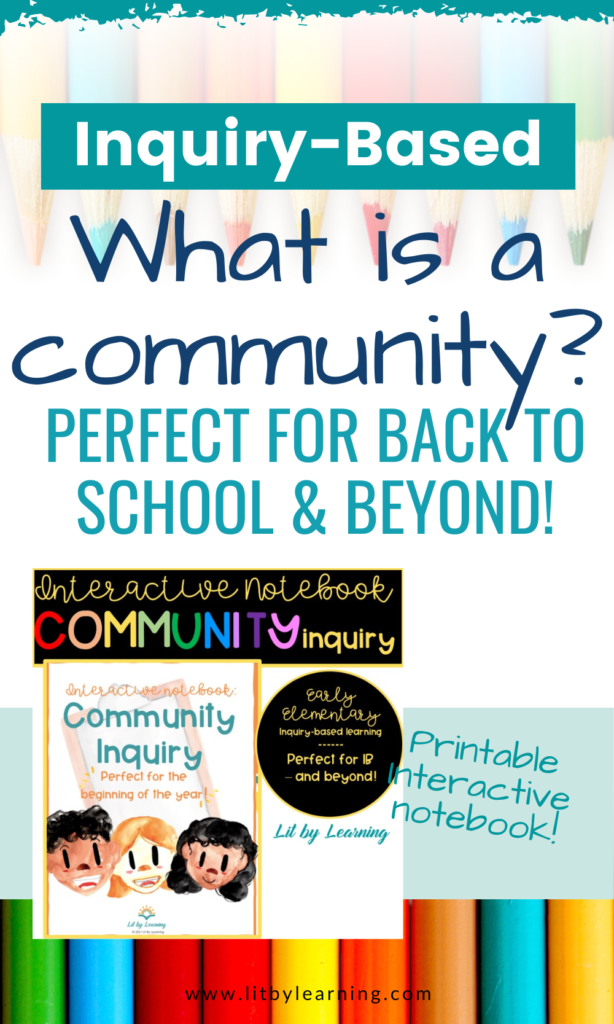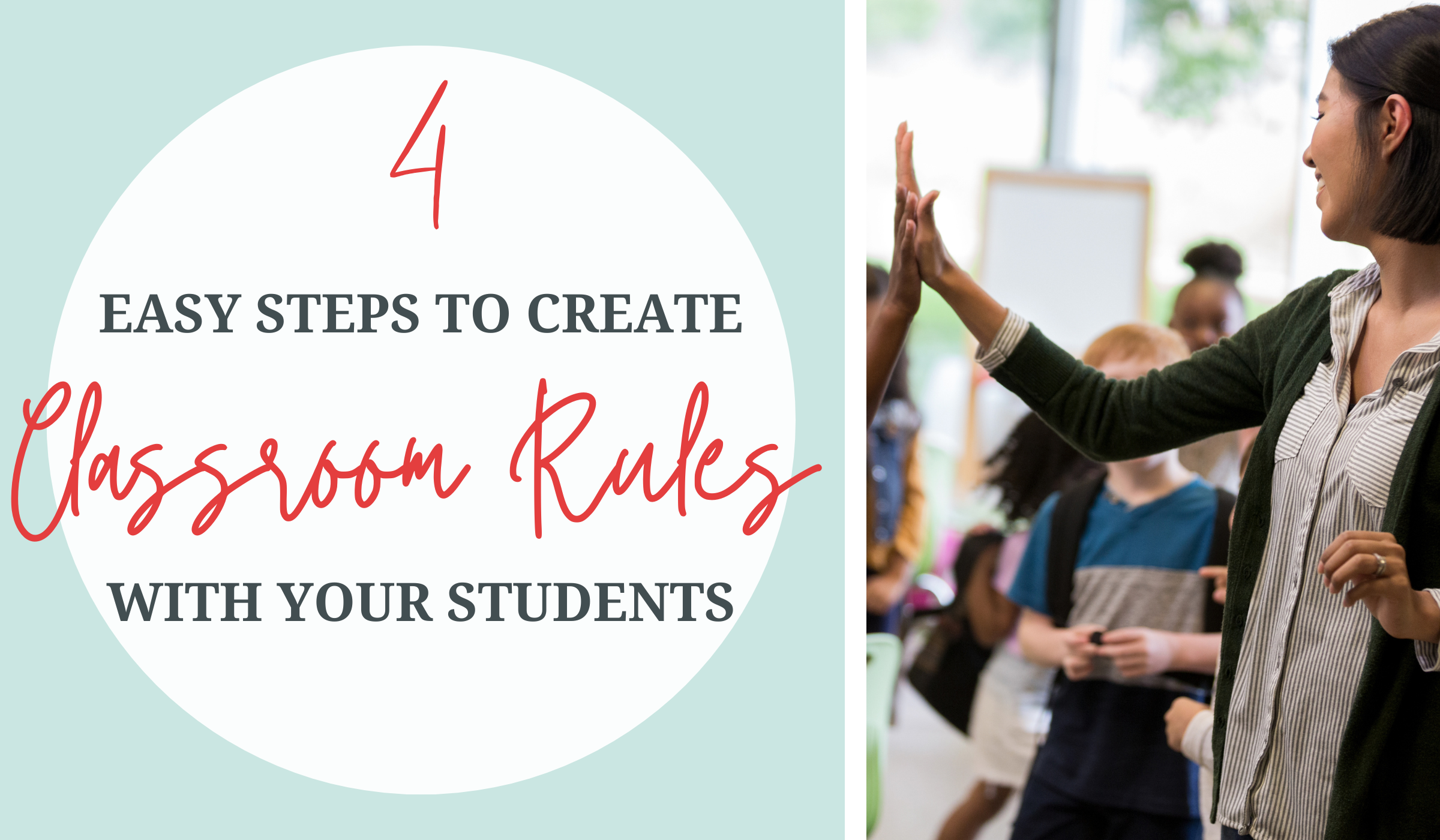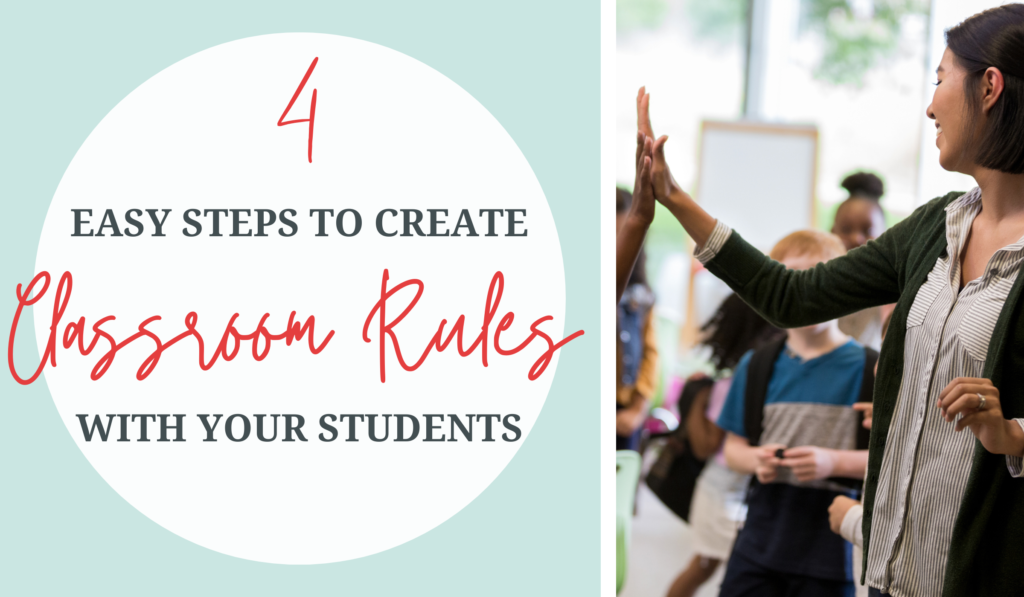
Create classroom rules with students?! Stay with me here.
It’s back to school season and we know that that means: establishing classroom rules and routines. Scenario 1: Students walk in and find a long list of “don’ts” at the front of the room. “Don’t run,” “Don’t talk when it’s not your turn,” “Just don’t.” Scenario 2: You cooperate to create classroom rules with students. Students create classroom rules and expectations and BAM! a student centered learning environment is introduced on the very first day of class.

But HOW?! I’ve taught everything from Pre-K to 5th grade English Language Arts and the simple 4-step process you’re about to see has worked seamlessly in each. It’s … just short of magical. And the best part? You don’t need totally beautiful classroom rules anchor charts or fancy clip art for classroom rules – your students will create all that you need for the entire school year!
Did you snag your free guide yet?
If you’re here, I just KNOW you’re my kind of teacher: one who cares so deeply about their students that you’re always looking for best practices and new ideas. Grab your copy of my FREE Learner-Led Teaching Guide – and join the Lit By Learning community of learner centered educators!

Why should you create classroom rules with students?
It’s pretty simple: students – and people in general – are much more likely to buy into something they themselves helped create. Translated to classroom terms: students will be more invested in following the rules if they had some say in what they were.

Guidelines as you create classroom rules with students
While you as the teacher can pretty much let your students take the driver’s seat with this easy 4-step process, there are a couple of non-negotiables as you create classroom rules with your students.
Expectations should be positively stated
Have students discuss what they SHOULD do, not what they shouldn’t. Why? A list of no’s is basically an invitation to try it – just this one time. Positively stated expectations keep what we should do at the forefront of our brains.
At least one expectation needs to address physical safety
If you’re like me this one is a bummer because you’d like to assume that safe bodies in the classroom are a given, but as teachers know all too well, it’s not. Make sure to have at least one of your rules be about staying physically safe.
Make it less about managing and more about mutual vision-casting
A re-frame can really help you and the class get into this expectation-making process. Aim for less of a “we need rules!” vibe and more for a mutual dreaming of what a truly wonderful learning environment could be like situation.

The 4 simple steps to create classroom rules with students
Step number one: the 4 critical questions
These 4 integral questions are key to getting your students’ brains going!
- How do you want to be treated by me?
- How do you want to be treated by each other?
- How do you think I want to be treated by you?
- How should we treat one another when there are problems?
Tips for this first step:
- Be creative with how you present these questions! While we usually answer the first question as a whole group to practice the process, mixing up the format is fun. I’ve done these questions as round-the-room writing on big posters, small groups with 1 question apiece, or with students using different colored sticky notes to respond.
- Younger students especially love seeing their names next to their ideas! Simply write who said each one to increase engagement!
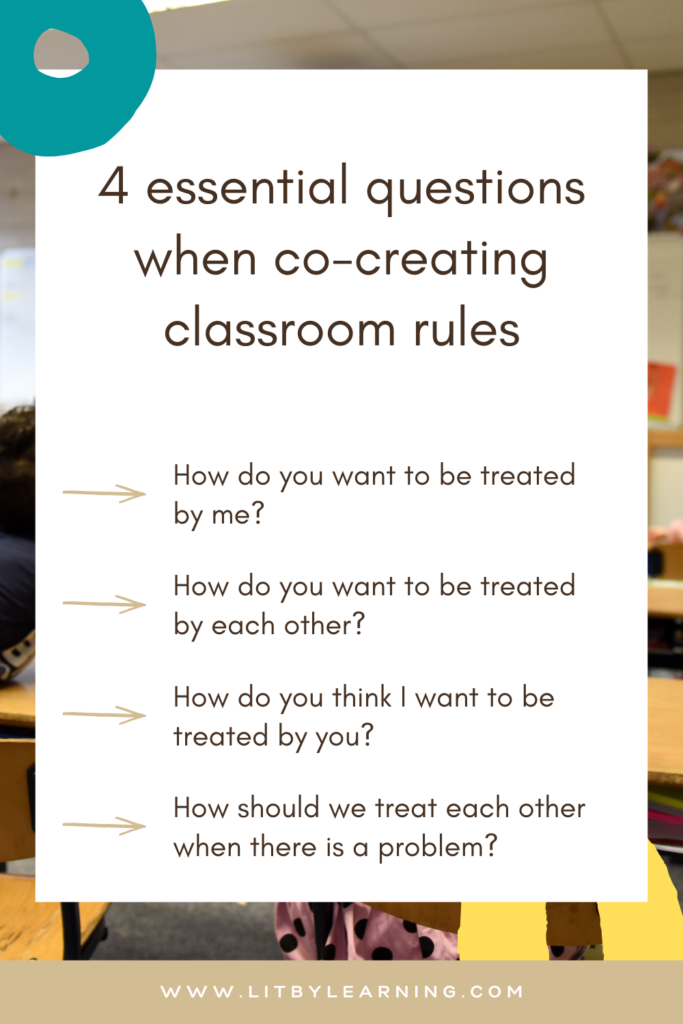
Step 2: Search for overlapping and repeating ideas
After you and your students have thought about the 4 questions, it’s time to share out your answers. While doing so, you’ll work together to see which ideas are repeating.
Here’s the simple procedure:
- each group shares out 1 word they wrote down/discussed while answering the question
- a recorder writes it down on a new blank piece of chart paper.
- write each new word, forming a comprehensive list, compiling answers to all 4 questions
- when words are repeated by groups/individuals, put a check next to the word
When you are finished, have a conversation about which words or phrases are repeated the most. Make note of these, highlighting that these must be important values to your class.

Step 3: Synthesize into positively-stated “we will” statements
For this step, you will bridge the compiled list made in Step 2 into no more than 3-4 class expectations. The simplest way I’ve found to do this is to add “we will” to the beginning of the statements. For example, if “nicely” was an oft-repeated word, the expectation will be “We will be nice.” Even if that sounds trite or insufficient to you, I really recommend sticking to students’ words as much as possible.
I know it’s hard to keep it to 3-4 expectations, but trust me: keeping it simple is the way to go. Combine some like words to help you keep it to 4.
Write these expectations on a large piece of paper that will be your anchor chart for the year. Finally, students – and adults! in the room sign the agreement and it is posted on the room throughout the year.
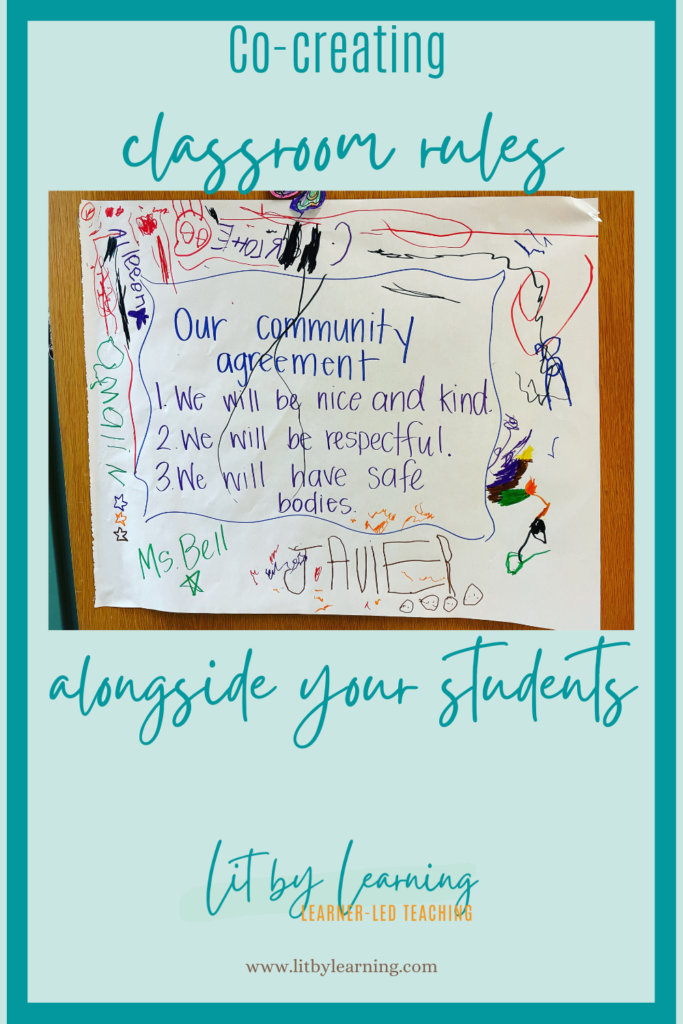
Step 4: Flesh out your newly-created classroom expectations
Once you’ve asked the 4 questions, synthesized the answers, and created positively stated expectations, it’s time to get very concrete. Your expectation says: “we will be respectful, ” but what does that mean?!
To flesh out the co-created classroom expectations, I love doing the following three activities:
- We will/we will not posters: draw and write about what you WILL do and what you WILL NOT do if you’re following this expectation
- Looks like /sounds like: what will it look like and sound like when you’re embodying this shared tule?
- Problem cards: as problems arise (you know they will!), write them down on note cards. During transitions or class meetings, draw a card, identify which expectation the problem is going against, and brainstorm solutions together!
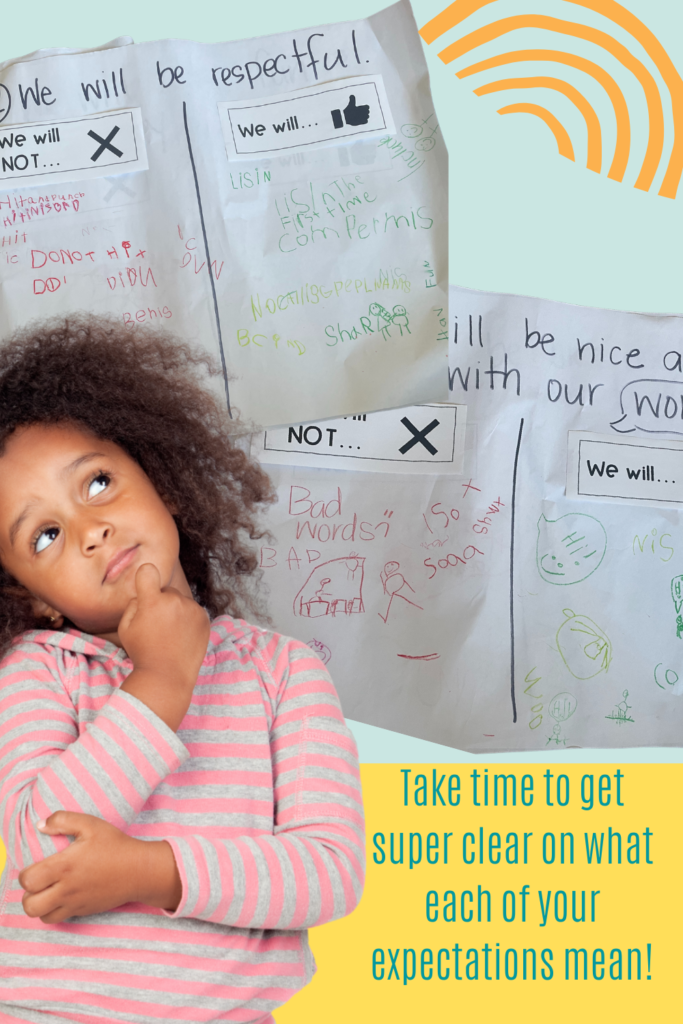
Looking to establish a strong classroom community?
I LOVE to start off our school year strong with an inquiry into community! Use my interactive notebook – and the book ideas below to kick off your own community unit!
